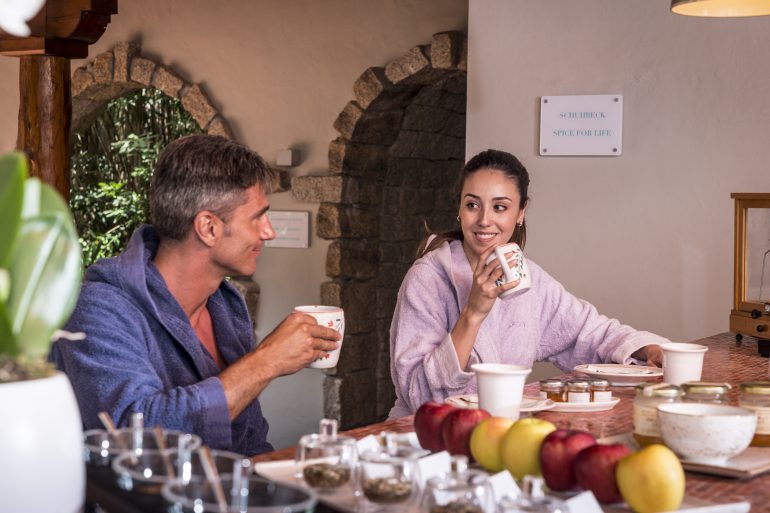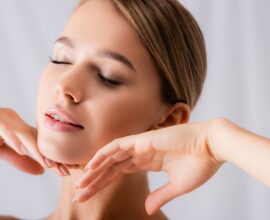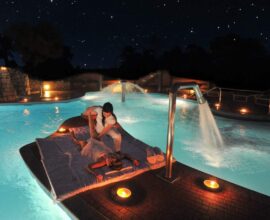Origin and history of herbal tea: the benefits for body and mind
Herbal tea: what it is and what are the methods of preparation
Herbal tea is a beverage known since man made use of healing with medicinal plants, and its beneficial properties were already known to the ancient Greeks and Romans.
The preparation of herbal teas became increasingly sophisticated during the Middle Ages with the work of monks and followers of medical and alchemical schools who conducted rigorous studies on medicinal herbs, making precise classifications and subdividing the plants according to their effect and effectiveness.
What is herbal tea? In herbal medicine, herbal tea is any liquid preparation, usually without caffeine, belonging to the hydrolytes category. Hydrolytes are liquid pharmaceutical preparations that extract water-soluble active substances from plants.
In the preparation of a herbal tea, the fresh or dried herbs must be chopped with care because the shredding can affect the extraction of the active ingredients. The herbs must also be homogeneous and combined according to precise indications being careful never to mix the hard parts with the tender ones of the plant.
The International Pharmacopoeia, in order not to inhibit the efficacy of the single ingredient and to avoid problems arising from unfavourable interactions, recommends that no more than eight different herbal substances, but in a herbal tea, you usually do not exceed the amount of five equally dosed herbs.
A herbal tea composed of several herbs has elements that can be classified according to the following characteristics:
• Remedium Cardinale (basic remedy): one or more plants with specific principles according to needs;
• Adiuvans (adjuvant): one or more plants which assist the absorption of the basic remedy;
• Costituens (complement): one or more plants that give a pleasant appearance to the beverage;
• Corrigens (corrector): one or more plants capable of improving the organoleptic characteristics of herbal tea.
Herbal teas can be made from the infusion or decoction of herbs or spices in hot water. The infusion allows extracting the active principles or aromas from medicinal plants or solid foods, by immersing them in a liquid, for example, water, for a longer or shorter time. Decoction, on the other hand, is a method used to extract the active substances or flavourings, provided they are not thermolabile, from the parts of medicinal plants or foods that turn out to be harder, such as roots, seeds, bark or wood.
There are, therefore, two different types of herbal teas depending on the extraction method you choose to use:
• Infusion: in this case, different parts of the plant are used, including flowers, fruits, herbaceous parts and leaves. The beverage is prepared by pouring boiling water on the selected parts, dried and chopped, before leaving everything in infusion for a few minutes. After this phase, we proceed to the filtration with a strainer, and after having squeezed the solid residue in the filter the infusion is ready;
• Decoction: the most leathery parts of the plant, such as roots, hard seeds and bark, are carefully cut and then placed in a pot with cold water that will be brought to a boil. It is necessary to let simmer over low heat for a time ranging from 10 to 30 minutes and then to rest for another 10 minutes. Once cooled, the liquid must be filtered with a strainer before being consumed. Decoction is often confused with infusion but between the two extraction methods there is a substantial difference: in decoction, the parts of the plant are immersed in water at room temperature, while in the infusion they are immersed in the water already brought to high temperatures.
Herbal tea is a liquid preparation that can also be obtained from the maceration of herbs in water, or with other solvents at room temperature to extract certain components. The time of maceration varies according to the active ingredient to be extracted (from one day to several weeks) and the product obtained from maceration is called macerate.

Herbal tea: the benefits of a long-life elixir
Drinking a cup of herbal tea is not only a good daily habit but also one of the simplest, easiest and fastest methods to enjoy the benefits of plants and achieve visible and lasting effects on the well-being of the body and mind.
Depending on the mixture of medicinal herbs it is possible to make different types of herbal teas:
- Aphrodisiac herbal teas
- Bechic herbal teas
- Colagogue herbal teas
- Digestive herbal teas
- Diuretic herbal teas
- Purifying herbal teas
- Galattofore herbal teas
- Cholesterol-lowering herbal teas
- Ipnoinducenti herbal teas
- Hypotensive herbal teas
- Laxative herbal teas
- Sedative herbal teas
Here are the main benefits of herbal teas:
- Counteract abdominal swelling and have a diuretic effect;
- Promotes digestion and elimination of intestinal gases;
- purify and detoxify the organism;
- good decongestant of mucous membranes;
- Distend nerves and promote concentration;
- Reduces headaches and stimulates the immune system;
- Reduces nausea and relieves menstrual pain;
- Helps to treat colds, respiratory inflammation and influences;
- Alleviate tensions and stress in everyday life;
- They have a sedative action for those suffering from anxiety and insomnia.
To enjoy the benefits of herbal tea, it is important to choose the right mix of herbs and consume it in a welcoming and relaxing environment such as the Acquaforte Thalasso and Spa of Forte Village, the award-winning resort surrounded by the beautiful sea of Sardinia.
Acquaforte Thalasso & Spa, excellence in the panorama of Italian spa resorts, is an intimate and quiet location dedicated to rest and beauty, an experience of pure relaxation thanks to the healing power of water and the benefits of wellness treatments such as a massage with Ayurvedic oil or a shiatsu massage.
Do you want to have a dream holiday in a paradise of relaxation, well-being and flavour? Discover the Forte Village Resort in Sardinia






